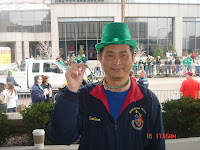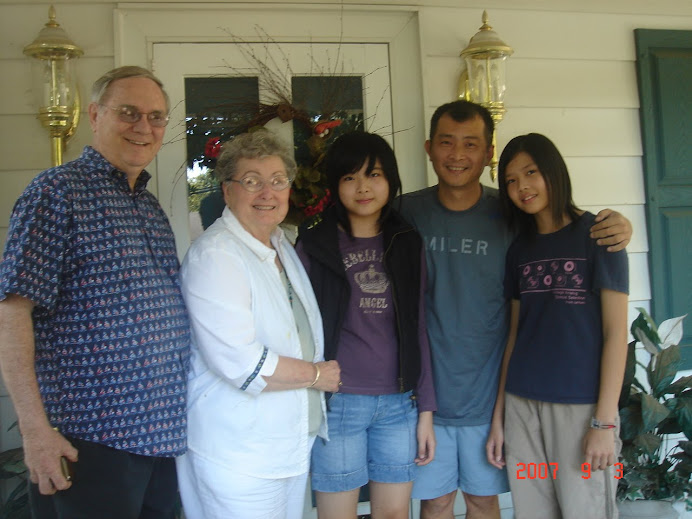
The summer time is the reproduction period for some wild birds in Taiwan. When you walk in the forest and watch the trees carefully, you may easily find bird nests. Some birds' nests are made of grasses and tree branches, while some birds build their nests in a hole of tree trunks, such as Muller's Barbets (Megalaima oorti).
Muller Barbet (五色鳥) is of the woodpecker category and its body is in five different colors including green, red, yellow, blue, black. Therefore, it is also called the five-colored bird.
Two weeks ago, I went to the Taipei Botanical Garden one morning to see the blossom lotus. I found a Muller's Barbet nest on a tree just beside the lotus pool and several photographers surrounding the tree.
They told me that they were waiting to take a photo of the mother Muller's Barbet feeding her babies. I saw a baby muller's barbet stretch his head out of the hole of his nest to explore the world while waiting for his mother to bring food back. I stayed there for about half an hour, but no mother Muller's Barbet flew back. Maybe there were too many people there that scared the mother Muller's Barbet.
The Muller's Barbet's reproduction period begins in March to late of August; June and July are the reproductive peak. It is estimated that since incubation, nurturing young fledgling to leave the nest needs at least one month.
The Muller's Barbet is monogamous. During incubation period, the female Muller's Barbet stays in the nest to incubate eggs, while the male Muller's Barbet will be responsible for searching for food to feed the female until the baby birds hatch.
After that, the male and female birds will go out together to search for food to feed their young. The frequency of feeding time is about 15-20 minutes in the morning a few hours after sunrise. Fruits and insects are the main food for baby Muller's Barbets.
Muller's Barbet is an endemic subspecies and a common resident of Taiwan. They prefer to stay in low-elevation hills and in dense, broad-leaved forests. In Taipei, Muller's Barbets can easily be found in most public parks and mountains surrounding the city. As long as you can trace the sound of “grunt, grunt ….” you won't miss the beautiful bird.
http://www.chinapost.com.tw/travel/taiwan-north/taipei/2009/08/03/218905/Seeing-the.htm




























































